Images: Peering Back to the Big Bang & Early Universe
Mystery Swirls Around 'Dark Stars'
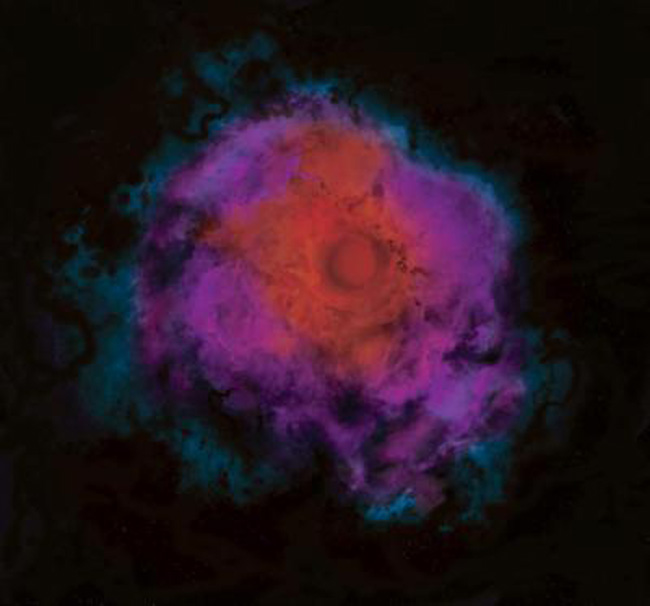
This artist's conception shows what an invisible "dark star" might look like when viewed in infrared light that it emits as heat. The core is enveloped by clouds of hydrogen and helium gas. A new University of Utah study suggests the first stars in the universe did not shine, but may have been dark stars.
Conditions for Universe's First Stars Recreated In Lab
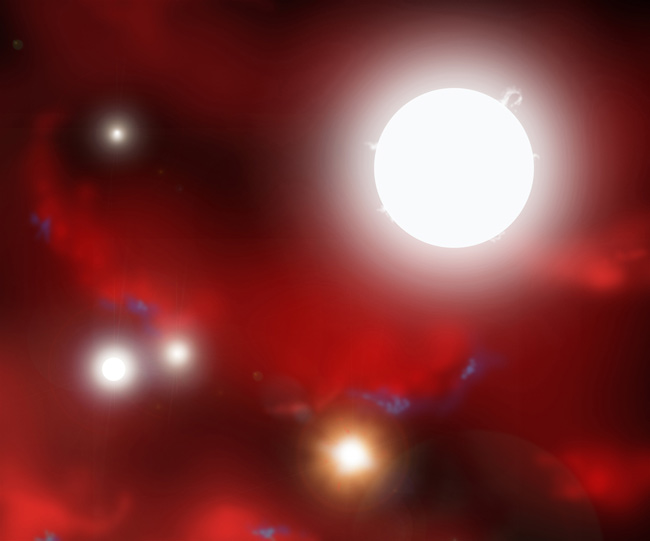
The first primordial stars began as tiny seeds that grew rapidly into stars one hundred times the mass of our own sun. Seen here in this artist impression, swirling clouds of hydrogen and helium gases are illuminated by the first starlight to shine in the universe.
New Sky Map Could Help Reveal How Universe Formed
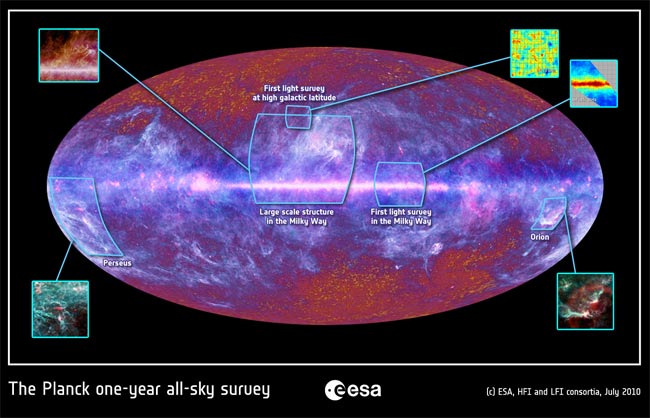
The microwave sky as seen by ESA's Planck satellite. Light from the main disk of the Milky Way is seen across the center band, while radiation left over from the Big Bang is visible on the outskirts of the image. Full story.
Earliest Galaxies Helped Lift Universe's Cosmic Fog
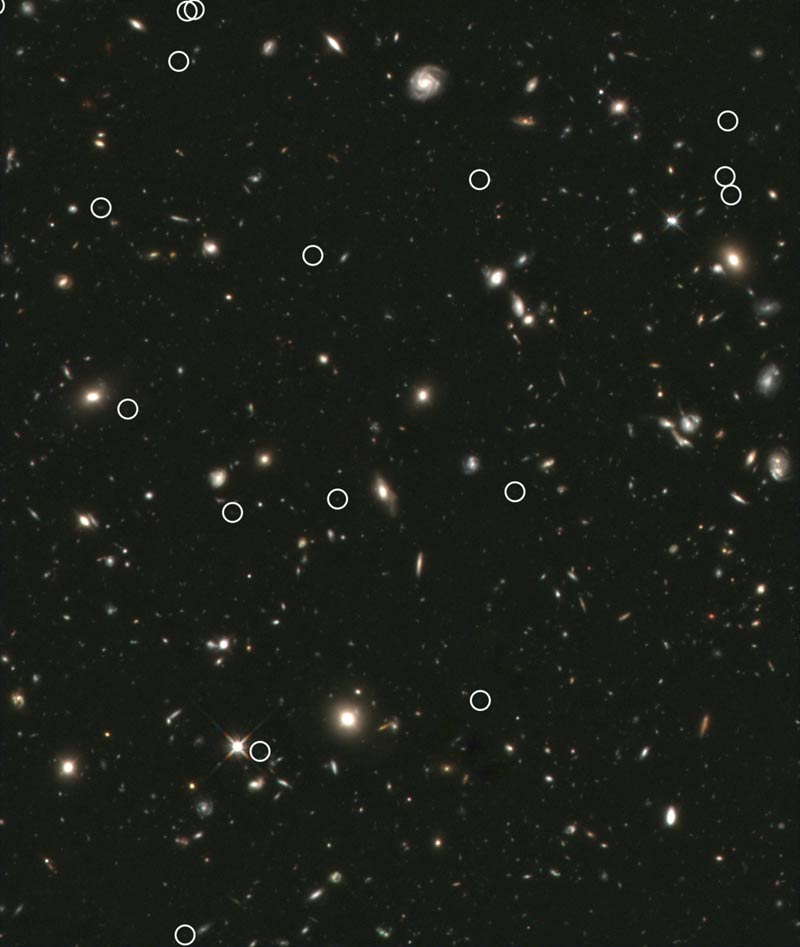
This is a true-color image from the part of the Hubble Ultra-Deep Field, released in 2010. It has allowed researchers to identify a new population of the most-distant known galaxies (white circles) present when the universe was less than 800 million years old. These galaxies may be responsible for ionizing intergalactic gas early in the universe's history.
Early Universe Protocluster

This extremely distant protocluster represents a group of galaxies forming very early in the universe, about only a billion years after the Big Bang.
Oldest, Most Distant Galaxy Seen by Hubble
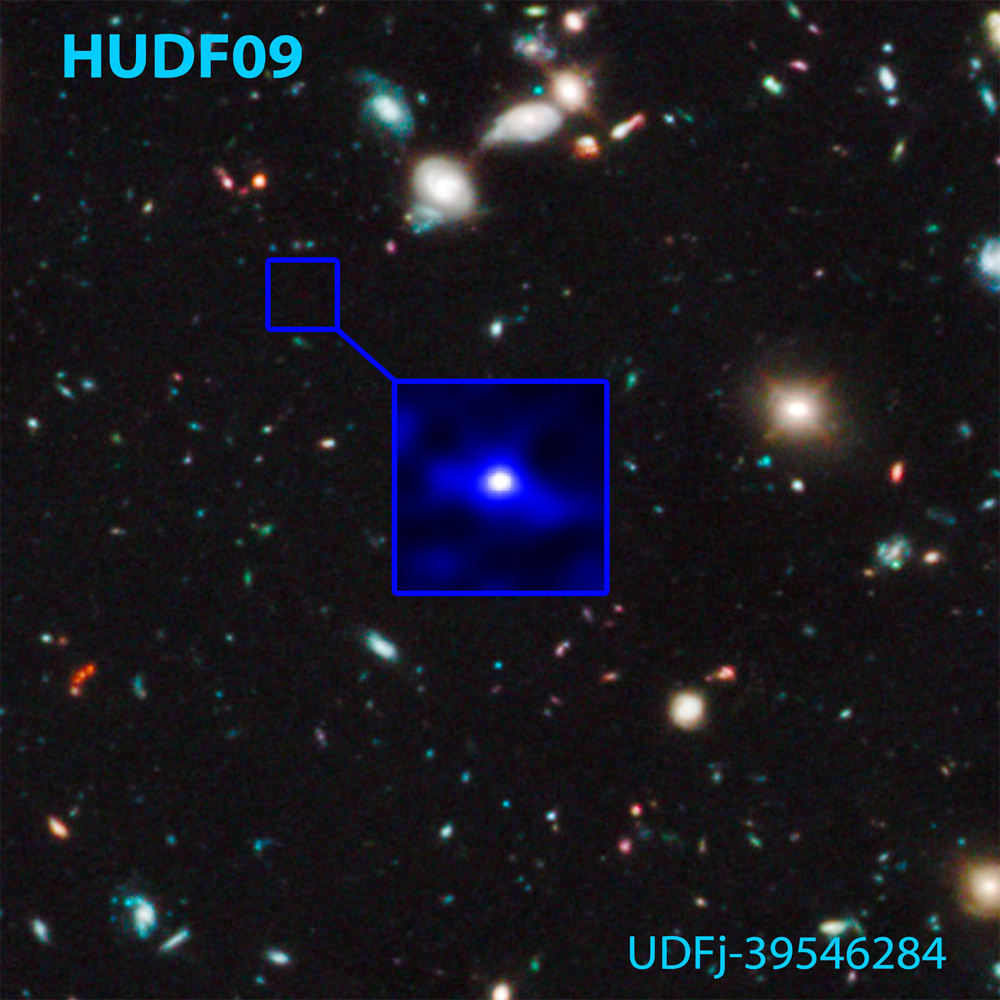
Shown here is the Hubble Space Telescope's photo of a candidate galaxy that existed 480 million years after the Big Bang (the z~10 galaxy) and the position in the Hubble Ultra Deep Field (HUDF) where it was found. The galaxy is touted as the oldest, most distant one yet seen by Hubble. This field — called HUDF09 — is the deepest infrared image ever taken of the universe as of January 2011.
Deepest Image of the Sky Ever Obtained in the Near-infrared
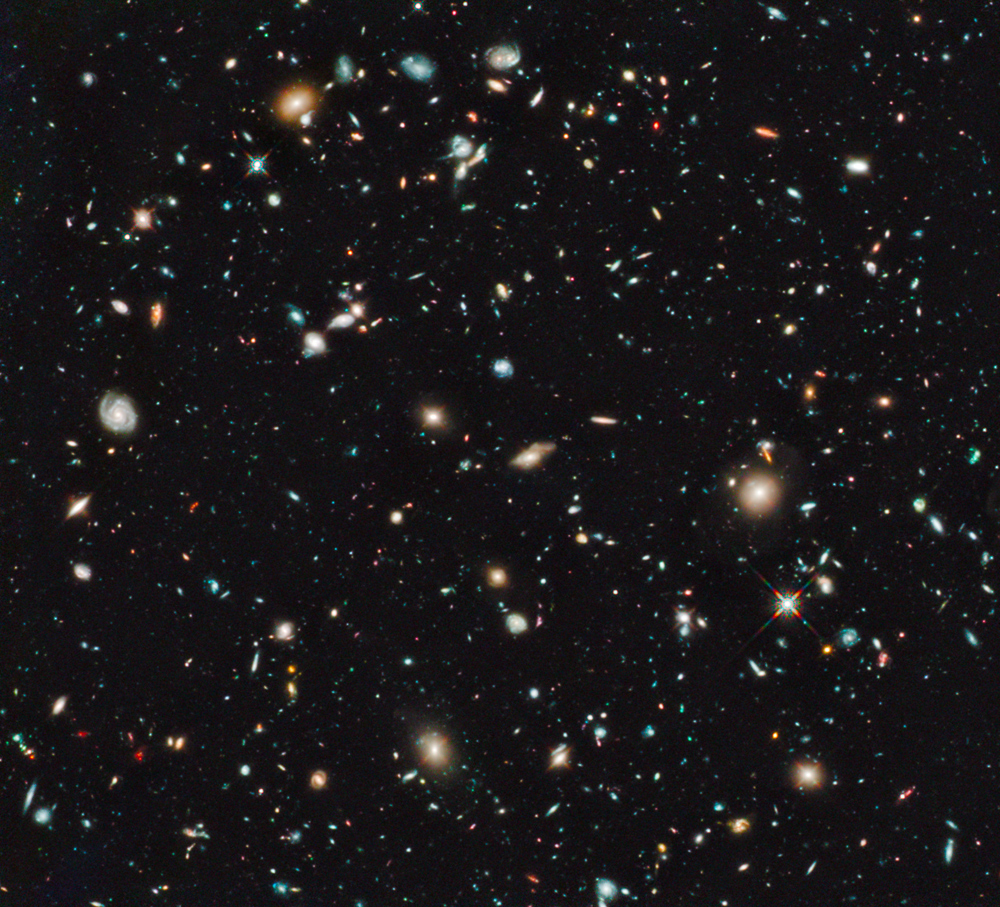
NASA's Hubble Space Telescope has made the deepest image of the universe ever taken in near-infrared light, released in 2009. The faintest and reddest objects in the image are galaxies that formed 600 million years after the Big Bang. The image was taken by the new Wide Field Camera 3 in the same region as the Hubble Ultra Deep Field (HUDF), which was taken in 2004 and is the deepest visible-light image of the universe.
Get the Space.com Newsletter
Breaking space news, the latest updates on rocket launches, skywatching events and more!
Newfound Galaxy 480 Million Years After the Big Bang
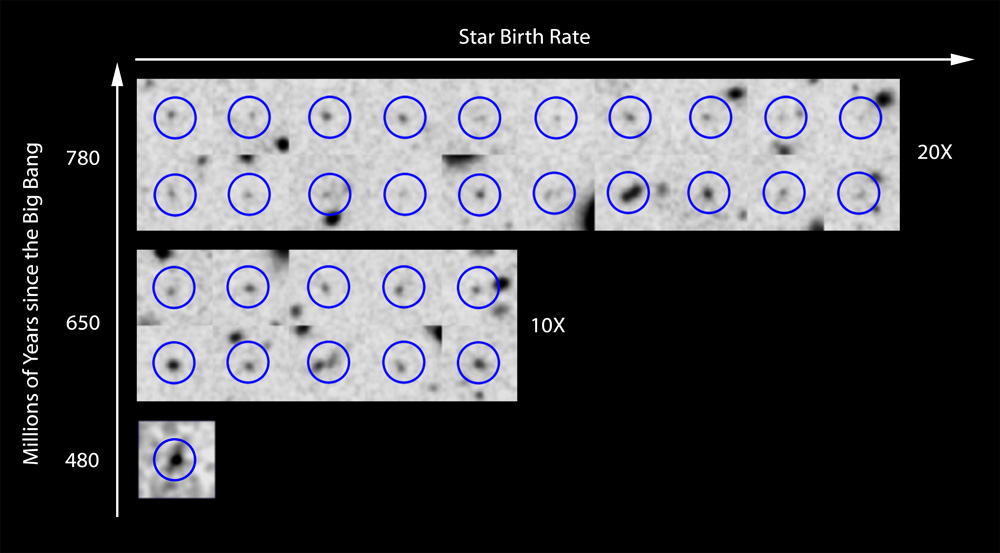
This schematic shows the newfound (as of January 2011) galaxy (discovered using the Hubble Space Telescope) at 480 million years after the Big Bang, as well as comparable galaxies from the epoch at 650 million years and at 780 million years after the Big Bang to represent the relative amounts of star birth in galaxies at different times.
Graphic: Hubble Telescope Deep Field Vision
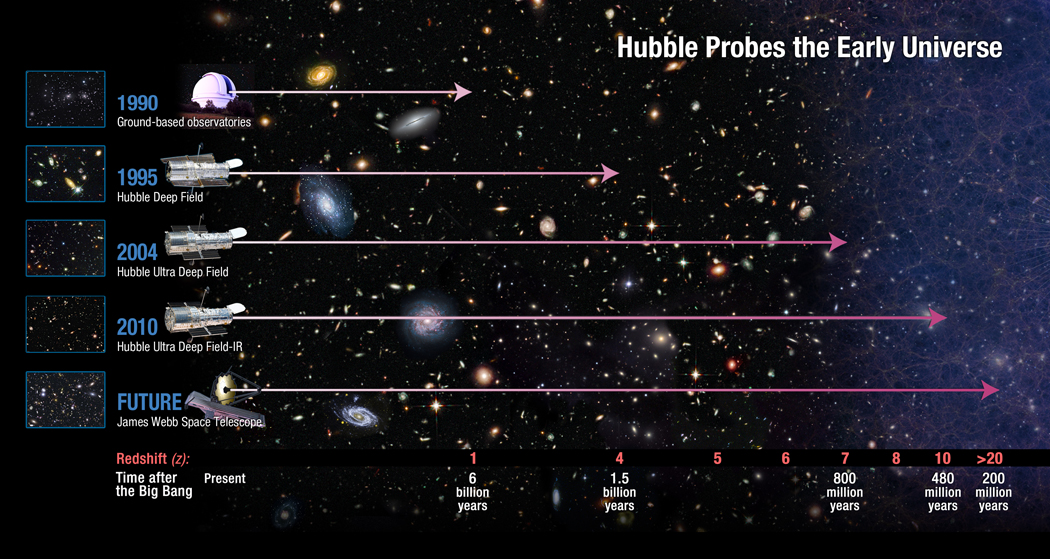
This NASA graphic shows how astronomers have used the Hubble Space Telescope to see deeper into the cosmos than ever before and hope to see even farther with the future James Webb Space Telescope.
Hubble Telescope Zooms in on Oldest Galaxy
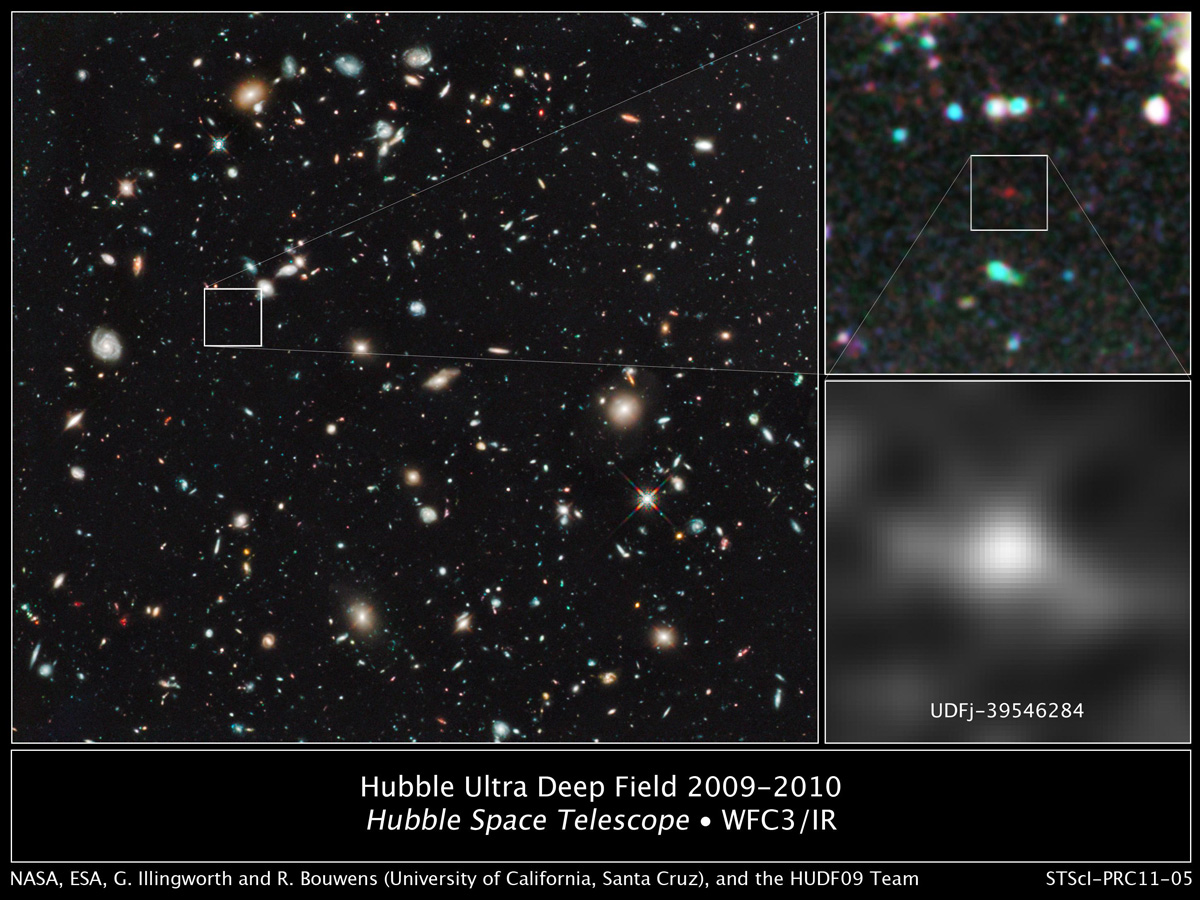
These images zoom into the Hubble telescope's HUDF WFC3/IR image around the galaxy UDFj-39546284, which scientists say is 13.2 billion years old — the oldest, farthest galaxy yet discovered. This image was released on Jan. 26, 2010.
Join our Space Forums to keep talking space on the latest missions, night sky and more! And if you have a news tip, correction or comment, let us know at: community@space.com.

Space.com is the premier source of space exploration, innovation and astronomy news, chronicling (and celebrating) humanity's ongoing expansion across the final frontier. Originally founded in 1999, Space.com is, and always has been, the passion of writers and editors who are space fans and also trained journalists. Our current news team consists of Editor-in-Chief Tariq Malik; Editor Hanneke Weitering, Senior Space Writer Mike Wall; Senior Writer Meghan Bartels; Senior Writer Chelsea Gohd, Senior Writer Tereza Pultarova and Staff Writer Alexander Cox, focusing on e-commerce. Senior Producer Steve Spaleta oversees our space videos, with Diana Whitcroft as our Social Media Editor.









